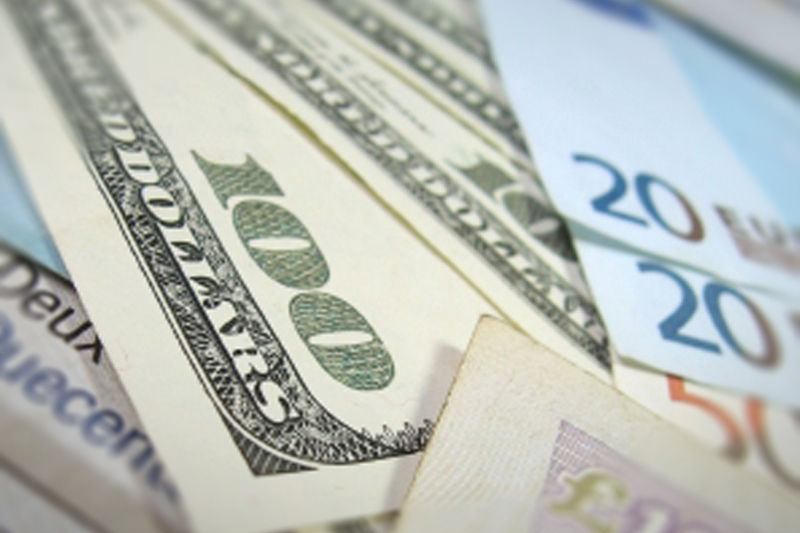Investing.com -- The euro fell sharply against the dollar on Tuesday, as market-moving comments from a European Central Bank official regarding increased stimulus measures with its aggressive quantitative easing program prompted a sell-off in the currency.
EUR/USD dipped more than 1.5% during Tuesday's session to an intraday low of 1.112, its lowest level since May 5. Although the pair rebounded slightly in U.S. afternoon trading to 1.115, it still experienced its largest one-day sell-off since late-March.
EUR/USD likely gained support at 1.1070, the low from April 30 and was met with resistance at 1.1384, the high from May 13.
In Europe, the euro fell precipitously hours after ECB member Benoît Coeuré outlined an effort by the central bank to frontload asset purchasing of government bonds at the start of the summer. Speaking at the Imperial College Business School/Brevan Howard Centre for Financial Analysis in London, Coeuré said Monday night that the ECB will increase its purchase of European Asset-Backed Securities in May and June to offset a seasonal lack of liquidity.
Coeuré emphasized the additional stimulus measures are related more to seasonal market conditions than the recent sell-off of government bonds in the euro zone.
"We are aware of seasonal patterns in fixed-income market activity with the traditional holiday period from mid-July to August characterized by notably lower market liquidity," Coeuré said during the speech."If need be, the front loading may be complemented by some back loading in September when market liquidity is expected to improve again. The slightly higher purchase volume that market analysts may observe in the coming weeks is therefore unrelated to the recent episode of market volatility."
The €1.1 trillion initiative is intended to stimulate corporate borrowing and economic expansion but is not expected to drive interest rates lower. Following the release of Coeuré's prepared remarks on Tuesday morning, yields on 10-year sovereign debt throughout the euro zone moved broadly lower. Yields on Germany 10-Year bunds fell five basis points to 0.59%, while yields on Spanish 10-Year and Italian 10-Year bonds declined by roughly eight basis points each, pushing the coupons on both below 1.82%.
In the U.S., new residential construction for the month of April soared to its highest level since 2007, bolstered by a spike in multi-family starts. The U.S. Department of Commerce said Tuesday that housing starts last month surged more than 20% for the month to 1.135 million, one of its highest on record. The reading far exceeded the high end of analysts' forecasts, which hovered in a range of 0.97 to 1.120 million.
Similarly, the number of new U.S. housing permits soared last month by more than 10% to 1.143 million representing its largest gain in more than seven years. Permits for multi-family units rose by 20.5% to 0.477 million, while multi-family starts swelled by more than 25% to 0.402 million. It was also a strong month for single-family starts, which expanded by 16.7% on the month and 14.7% year-over-year to 0.733 million.
As a result, the dollar extended gains from one session earlier by jumping more than 1% on Tuesday. The U.S. Dollar Index, which measures the strength of the greenback versus a basket of six other major currencies, gained more than 1.1% in U.S. morning trading to an intraday high of 95.55, its highest level in more than two weeks.
Investors await the release of the Federal Open Market Committee's minutes from its April meeting on Wednesday for more clues on the timing of a much-anticipated interest rate hike. A wave of soft U.S. economic data since the FOMC's meeting in March has fueled speculation that the Fed could delay lift-off from June until September or even December.
